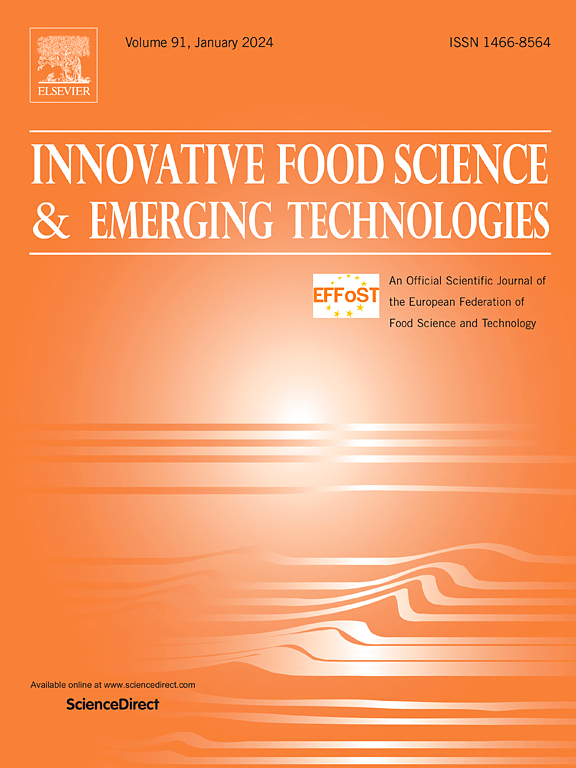Highly effective preparation of low molecular weight chitosan by enhanced chemical degradation applying high gravity technology
IF 6.3
1区 农林科学
Q1 FOOD SCIENCE & TECHNOLOGY
Innovative Food Science & Emerging Technologies
Pub Date : 2025-01-28
DOI:10.1016/j.ifset.2025.103938
引用次数: 0
Abstract
To effectively prepare value-added low molecular weight chitosan with improved molecular weight uniformity, a novel high-gravity reactor—the Rotating Foam Stirrer Reactor (RFSR)—is proposed to enhance the chemical degradation process of chitosan. The study reveals that the combined H₂O₂-Vc degradant significantly increases degradation efficiency compared to H₂O₂ or Vc alone, attributed to synergistic effects in hydroxyl radical production. Specifically, the degradation efficiency of the H₂O₂-Vc combination increased by 56.41 % and 32.88 %, respectively, within 5 min. Increased rotational speed improves degradation efficiency and narrows the molecular weight distribution, particularly at higher chitosan concentrations. The weight-average molecular weight rapidly decreases within the first 30 min and then stabilizes, while maintaining a more uniform distribution. Positioning the degradant feed at the stirrer's outer edge further enhances degradation. The RFSR outperforms traditional reactors, producing chitosan with lower molecular weight and better uniformity. Additionally, a predictive correlation for the reaction rate constant, incorporating mass transfer effects, shows good agreement with experimental results, with an error margin of approximately ±20 %, supporting large-scale industrial applications in polysaccharide degradation.
求助全文
约1分钟内获得全文
求助全文
来源期刊
CiteScore
12.00
自引率
6.10%
发文量
259
审稿时长
25 days
期刊介绍:
Innovative Food Science and Emerging Technologies (IFSET) aims to provide the highest quality original contributions and few, mainly upon invitation, reviews on and highly innovative developments in food science and emerging food process technologies. The significance of the results either for the science community or for industrial R&D groups must be specified. Papers submitted must be of highest scientific quality and only those advancing current scientific knowledge and understanding or with technical relevance will be considered.
文献相关原料
公司名称
产品信息
阿拉丁
Ascorbic acid (Vc)

 求助内容:
求助内容: 应助结果提醒方式:
应助结果提醒方式:


